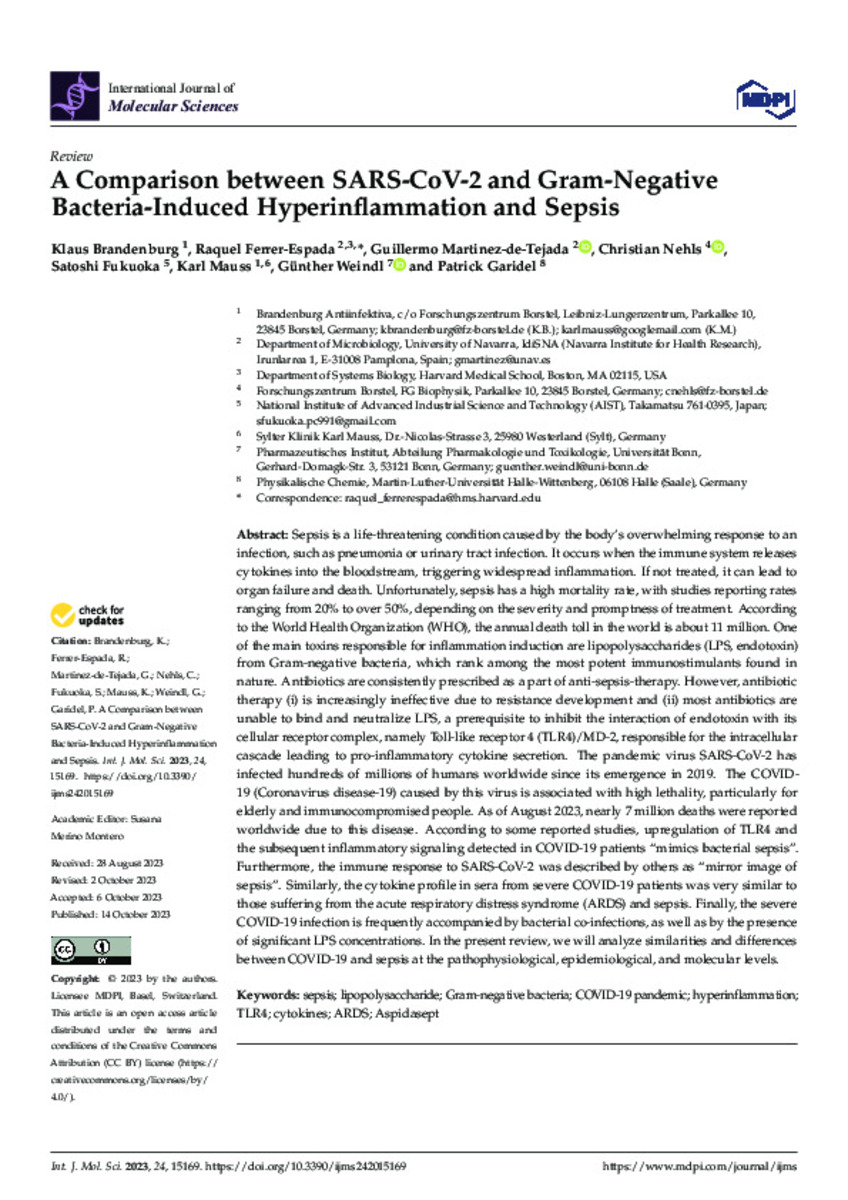A comparison between SARS-CoV-2 and Gram-negative bacte- 1 ria-induced hyperinflammation and sepsis
Keywords:
ARDS
Aspidasept
COVID-19 pandemic
Gram-negative bacteria
TLR4
Cytokines
Hyperinflammation
Lipopolysaccharide
Sepsis
Note:
This article is an open access article distributed under the terms and conditions of the Creative Commons Attribution (CC BY) license
Citation:
Brandenburg, K. (Klaus); Ferrer-Espada, R. (Raquel); Martinez-de-Tejada, G. (Guillermo); et al. "A comparison between SARS-CoV-2 and Gram-negative bacte- 1 ria-induced hyperinflammation and sepsis". International Journal of Molecular Sciences. 24 (20), 2023, 15169
Statistics and impact
0 citas en

0 citas en

Items in Dadun are protected by copyright, with all rights reserved, unless otherwise indicated.







